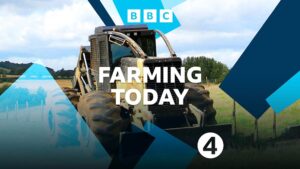NPA chief executive Lizzie Wilson has defended the pig sector’s environmental record, in response to a damning report by the Wildlife Trusts that she said lacked context and presented minimal hard evidence to back its claims.
The report, which has generated considerable media interest, highlighted what it claims are the pig and poultry sectors’ cumulative ‘huge’ environmental impact, pointing to the ‘damaging effects of growing the vast feedstocks needed for these animals’ and the ‘deep impacts of these increasingly intensive industries on water quality and pollution levels’.
Its key claims included:
- The scale of the UK pig and poultry sector is huge, with intensive production highly concentrated into ‘hotspot’ areas which often mean current regulations are insufficient to manage the potential environmental impacts of these enterprises.
- The waste from pig and poultry production is about 10.4 million cubic metres per year in the UK, equivalent to 4,160 Olympic-sized swimming pools. The high level of nutrients found in this excreta make it hard to use this waste sustainably.
- Over a third of the UK’s total wheat crop is grown for consumption by pigs and poultry. The fertiliser and pesticide use associated with producing a high output of these cheap grains risks more pollution, placing further pressure on UK wildli
Barnaby Coupe, senior land use policy manager at The Wildlife Trusts says: “Assessment of the environmental impacts of pig and poultry production to date has largely focussed on the immediate risks of slurry pollution, but this research looks for the first time at the wider risks across the whole UK sector – in particular the vast land take for feed production.
“It’s clear that the significant impacts of pig and poultry production in the UK extend well beyond the intensive farming units themselves, and should leave us in no doubt that further action is needed to address the risks of environmental harms”
Context
 Mrs Wilson was asked about the report during a Radio 4 Farming Today programme interview, telling the programme it ‘tells us a lot of what we already know’, for example that intensive production is ‘highly concentrated into ‘hotspot’ areas. She also noted the emphasis on risk, rather than evidence of environmental damage.
Mrs Wilson was asked about the report during a Radio 4 Farming Today programme interview, telling the programme it ‘tells us a lot of what we already know’, for example that intensive production is ‘highly concentrated into ‘hotspot’ areas. She also noted the emphasis on risk, rather than evidence of environmental damage.
“As far as I can see, it doesn’t really present us with any compelling evidence with regards to specific pollution issues or incidents to justify their claims. Well managed risks don’t equate to negative outcomes,” she said.
She added that, while the report has a’ lot of big numbers thrown into it and some quite general headlines’, it lacks some ‘very important context’ to makes it more meaningful and accurate.
Addressing the report’s claim over the volume of the UK wheat crop grown for consumption by pigs and poultry’, Mrs Wilson pointed out that a significant proportion of the wheat consumed by pigs has been downgraded for livestock feed, having not made milling grade for human consumption. “Otherwise, it’s wasted,” she said.
She stressed that that pig sector is ‘one of the most highly regulated sectors throughout agriculture’. “We’ve been told repeatedly by both Defra and the Environment Agency that we’re not their immediate concern,” she said.
“Pigs and poultry are quite often used an example of the most environmentally-responsible sectors. We are environmentally permitted, we are governed by Farming Rules for Water, many farms engage with Catchment Sensitive Farming and 95% of pigs produced are audited by Red Tractor, who also ensure that all of the legislation, environmental or otherwise, is being complied with,” she said.
She acknowledged, however, that there is always room for improvement and things the pig sector can do better.
“That’s why we’re continuing to engage with government on their review of all the regulation pertaining to water quality to ensure that we’re doing as much as we can, we’re being as environmentally responsible as we can be and fulfilling all our responsibilities,” she added.
- You can listen to the full interview, HERE (from 11 mins)




